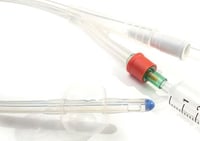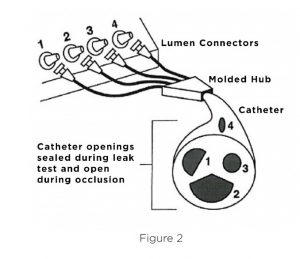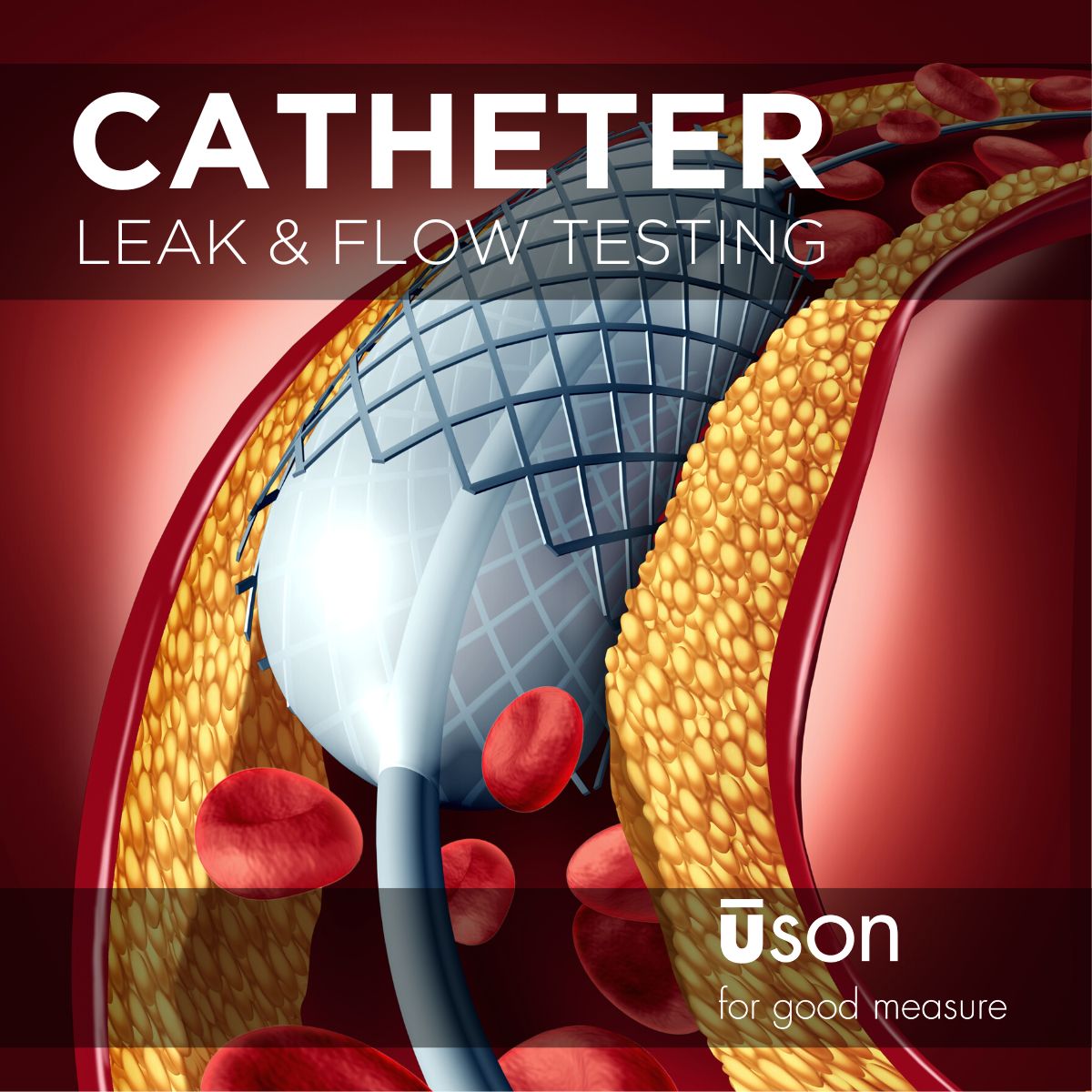Well Plate Leak Testing
Uson offers medical device leak testing solutions for testing well plates using our Sprint mD leak and flow tester.
CHALLENGE
Catheters are used to diagnose and treat many different medical conditions. This creates a need for a wide range of catheter designs. As such, catheter leak testing is critical to ensure safety and reliability. However, due to the range of tests that must be completed, this process can be lengthy and challenging. Multi-lumen catheters, for example, are intended for multiple configurations, and might be used for concurrent treatments that might include hemodialysis, pacing drug delivery, CVC, PICC, and more.
 Manufacturers of multi-lumen catheters face a demanding task during the quality testing process. Many regulatory bodies, including the FDA in the United States, require leak testers to check each lumen in the catheter to make certain nothing leaks. Each passageway must also be tested for possible blockage or partial occlusion.
Manufacturers of multi-lumen catheters face a demanding task during the quality testing process. Many regulatory bodies, including the FDA in the United States, require leak testers to check each lumen in the catheter to make certain nothing leaks. Each passageway must also be tested for possible blockage or partial occlusion.
Added to these concerns, the tester must be cost-effective so numerous stations can be implemented for increased production output. This requirement has led some manufacturers to custom-build catheter testers in-house, assembling them from computers and various measuring equipment, so that they often become an unmanageable collection of difficult-to-operate and difficult-to-maintain components.
SOLUTION
Uson’s Sprint mD leak tester is designed specifically to meet the challenges of medical device manufacturers, and is ideal for catheter leak testing. It can be configured as a four-channel sequential tester incorporating everything needed to test multi-lumen catheters for leakage and occlusion. The instrument checks for leaks in fittings, leaks through the outside catheter wall, inter-lumen leaks, and occlusion with each lumen.
When testing one lumen, all other lumens are opened to atmosphere through Sprint mD’s 3-way valves. This makes it possible to test leakage between adjacent passages in the catheter. Sprint mD catheter testers cost much less than a custom array of separate instruments, so users can install multiple stations to increase throughput.

How Sprint mD Works
The Sprint mD catheter tester works like this:
Clamping
To leak test a finished catheter, the opening in the distal end is typically closed off with an external sealing fixture. The catheter can then be checked for inter-lumen leaks. See Figure 2.

Occlusion Test
Occlusion tests can be performed individually after each lumen is leak tested, or all at once after all lumens have been tested. When testing for occlusion, the sealing device is removed from the catheter to allow the lumen to flow to atmosphere. During an occlusion test, Sprint mD looks for the pressure to drop below a preset threshold to verify that the passage is not blocked.
Sprint mD can be set up to test in any sequence by linking individual pressure decay and occlusion programs.
Applications
The Sprint mD 4-Channel sequential tester is ideal for evaluating multi-lumen catheters. The tester can also check any product that has multiple parts or multiple passages (up to four) that can be tested in sequence. In addition, the Sprint mD 4-channel sequential tester can be used to test as many as four individual products in sequence.
To test catheters with fewer lumens, Sprint mD models are available also in two- and three-channel configurations. We invite you to call Uson to discuss how a Sprint mD tester can be applied to your specific testing needs.
Sprint mD Features
Uson provides leak and flow testing solutions for the medical device manufacturing industry. In addition to extensive experience with catheter applications, Uson has assisted manufacturers with testing solutions for fast- flush drug delivery devices, well plates, breathing tubes and many more. Our team of experts can assist you with automatic leak testers and turn-key solutions to meet your application requirements. Contact us today and let's talk about your next project.
Uson offers medical device leak testing solutions for testing well plates using our Sprint mD leak and flow tester.
Uson's Sprint iQ leak tester is the only off-the-shelf answer to effective fast-flush drug delivery device leak testing
Integrity test of final assembled engine oil cavity for leaks in the upper or lower assembly and establishing the leak rate of the rear oil seal.
Industries
